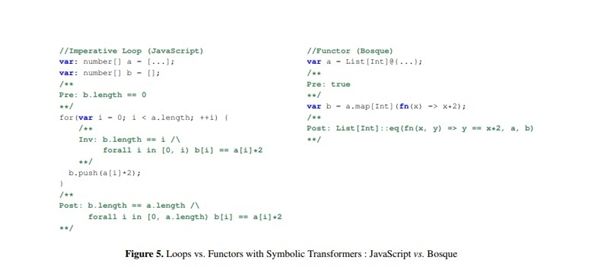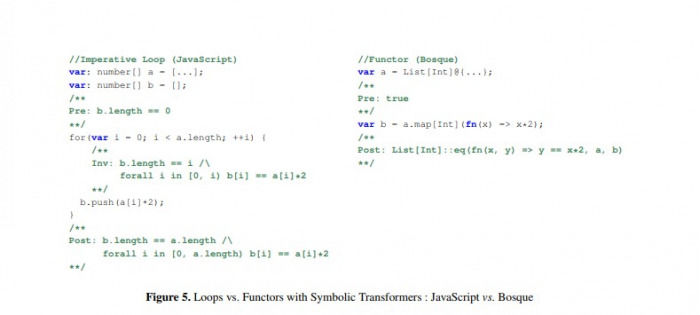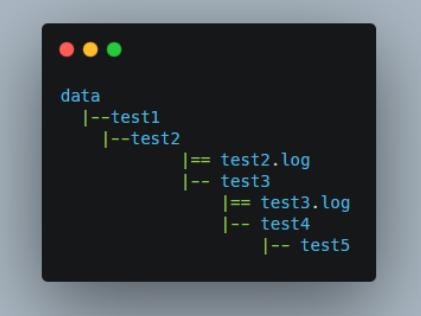Vue 3中的Typescript使用指南,增强代码的可维护性
 发布于2023-10-11 阅读(0)
发布于2023-10-11 阅读(0)
扫一扫,手机访问
Vue 3中的Typescript使用指南,增强代码的可维护性
引言:
在Vue 3中,Typescript的使用成为了开发者们广泛关注和推崇的一个话题。通过与Vue框架结合,Typescript可以为我们的代码提供更强的类型检查和代码智能提示功能,从而增强代码的可维护性。本文将介绍在Vue 3中如何正确地使用Typescript,并通过代码示例来演示其强大的功能。
一、配置Vue 3项目的Typescript支持
首先,我们需要在Vue 3项目中添加对Typescript的支持。在创建Vue项目时,我们可以选择使用Vue CLI来自动配置Typescript环境。如果你已经有一个现有的Vue项目,也可以手动添加Typescript的支持。
使用Vue CLI创建Typescript项目
打开命令行工具,执行以下命令来安装Vue CLI:npm install -g @vue/cli
创建一个新的Vue项目,并选择使用Typescript:
vue create my-project
然后选择"Manually select features",并勾选"TypeScript"选项。
手动添加Typescript支持
如果你已经有一个现有的Vue项目,可以手动添加Typescript的支持。首先,在项目的根目录下执行以下命令来安装Typescript:npm install --save-dev typescript
然后,创建一个新的tsconfig.json文件,并配置Typescript编译选项:
{ "compilerOptions": { "target": "esnext", "module": "esnext", "strict": true, "jsx": "preserve", "sourceMap": true, "resolveJsonModule": true, "esModuleInterop": true, "lib": ["esnext", "dom"], "types": ["node", "vite/client"] }, "include": ["src/**/*.ts", "src/**/*.d.ts", "src/**/*.vue", "tests/**/*.ts", "tests/**/*.tsx"], "exclude": ["node_modules"] }在tsconfig.json中,我们指定了编译目标为esnext,配置了类型检查的严格模式(strict:true),并添加了一些常用的类库和类型声明。
二、在Vue 3项目中使用Typescript
- 单文件组件中使用Typescript
在Vue 3的单文件组件中,我们可以使用<script lang="ts"></script>标签来指定使用Typescript编写逻辑代码。下面是一个简单的示例:
<template>
<div>{{ message }}</div>
</template>
<script lang="ts">
export default {
data() {
return {
message: 'Hello, Vue!'
};
}
}
</script>- 类型声明和接口
Typescript强大的类型系统是其最大的特点之一。我们可以使用类型声明和接口来明确数据和函数的类型,并提供更好的代码提示和可维护性。下面是一个使用接口和类型声明的示例代码:
interface User {
name: string;
age: number;
}
function getUserInfo(user: User): string {
return `Name: ${user.name}, Age: ${user.age}`;
}
const user: User = {
name: 'John',
age: 25
};
console.log(getUserInfo(user));在上述代码中,我们定义了一个User接口,包含了name和age两个属性。然后,我们编写了一个getUserInfo函数,它接受一个User对象作为参数,并返回一个字符串。最后,我们创建了一个名为user的User对象,并将其传递给getUserInfo函数进行处理。
- 组件的Props和原型属性
在Vue 3的组件中,我们可以使用Props和原型属性来定义组件的输入和输出。通过在组件的Props中声明类型,我们可以在编写代码时获得更好的智能提示和类型检查。下面是一个示例代码:
<template>
<div>{{ message }}</div>
</template>
<script lang="ts">
import { defineComponent, PropType } from 'vue';
interface Props {
name: string;
age: number;
}
export default defineComponent({
props: {
name: {
type: String as PropType<Props['name']>,
required: true
},
age: {
type: Number as PropType<Props['age']>,
default: 18
}
},
data() {
return {
message: `Name: ${this.name}, Age: ${this.age}`
};
}
});
</script>在上述代码中,我们首先导入了defineComponent和PropType方法。然后,我们定义了一个Props接口,包含name和age两个属性。接着,我们在组件的props选项中,通过PropType<Props['name']>的方式指定了name属性的类型为Props接口的name属性类型。最后,我们根据props选项中的属性来渲染组件的模板。
结论:
在Vue 3中,使用Typescript可以为我们的代码提供更强的类型检查和代码智能提示功能,从而增强代码的可维护性。本文介绍了如何配置Vue 3项目的Typescript支持,以及在Vue 3项目中正确使用Typescript的示例代码。希望这篇文章对你在Vue 3中使用Typescript有所帮助。
产品推荐
-

售后无忧
立即购买>- DAEMON Tools Lite 10【序列号终身授权 + 中文版 + Win】
-
¥150.00
office旗舰店
-

售后无忧
立即购买>- DAEMON Tools Ultra 5【序列号终身授权 + 中文版 + Win】
-
¥198.00
office旗舰店
-

售后无忧
立即购买>- DAEMON Tools Pro 8【序列号终身授权 + 中文版 + Win】
-
¥189.00
office旗舰店
-

售后无忧
立即购买>- CorelDRAW X8 简体中文【标准版 + Win】
-
¥1788.00
office旗舰店
-
 正版软件
正版软件
- 解决cubes中ValueError(reference)的方法
- 报错的原因在python中,当函数或程序尝试使用不合法的值或参数时,可能会出现ValueError。这是一种常见的异常,表示程序尝试使用无效的值或参数。具体原因可能是:使用了不支持的类型、传递了不正确的参数、数值超出了有效范围等。如何解决解决ValueError的方法因具体原因而异。但一般来说可以进行以下操作来解决:修改代码以使用合法的值或参数检查输入的数据是否合法,如果不合法,在程序中处理这些异常使用try-except语句来捕获错误并处理它检查程序是否正确处理了边界值或特殊值需要注意的是,在解决Val
- 7分钟前 Python 错误处理 后端开发 cubes cubes报错 0
-
正版软件
- 解决WordPress页面显示异常问题引起的头部错位
- WordPress头部错位导致的页面显示异常如何处理?在使用WordPress建站过程中,有时候会遇到头部错位导致的页面显示异常的问题。这种问题常常会导致网页排版错乱、样式失调等情况,影响用户体验和网站的专业度。本文将介绍WordPress头部错位导致的页面显示异常的处理方法,并提供具体的代码示例,帮助大家解决这一问题。问题分析头部错位通常是由于网页在加载C
- 12分钟前 头部 错位 0
-
正版软件
- 探究为何Golang适合高并发处理?
- Golang(Go语言)是一种由Google开发的编程语言,旨在提供高效、简洁、并发和轻量级的编程体验。它内置了并发特性,为开发者提供了强大的工具,使其在处理高并发情况下表现优异。本文将深入探讨Golang为何适用于高并发处理的原因,并提供具体的代码示例加以说明。Golang并发模型Golang采用了基于goroutine和channel的并发模型。goro
- 27分钟前 轻量级 性能优化 并发模型 0
-
 正版软件
正版软件
- 如何解决PIP报错“Unknown VCS: {vcs}”
- 报错的原因这个错误是由于在你的终端中运行pip命令时,你使用了一个无法识别的版本控制系统(VCS)。VCS是用于管理软件项目的版本控制系统,如git,Mercurial等。而这个错误表示你输入的VCS类型是pip不能识别的。如何解决要解决这个错误,你需要确保你使用正确的VCS类型并且正确的输入VCS名称。例如,如果你想安装一个使用Git版本控制的包,你应该使用以下命令:pipinstallgit+https://GitHub.com/user/repo.git或者pipinstallgit+git://g
- 42分钟前 0
-
正版软件
- 安装Golang:详细步骤指南
- Golang安装教程:详细步骤一览随着云计算、大数据、人工智能等技术的快速发展,编程语言也在不断变化和更新。其中,Golang作为一种高效、简洁、快速的编程语言,备受开发者们的青睐。本文将为大家介绍如何在不同操作系统中安装Golang,让您快速开始学习和使用这门语言。第一步:下载Golang首先,您需要从官方网站https://golang.org/上下
- 57分钟前 Golang 步骤 安装 0
最新发布
-
 1
1
-
 2
2
-
3
- Vue组件中如何处理图片预览和缩放问题
- 448天前
-
 4
4
-
 5
5
-
 6
6
- Python实战教程:批量转换多种音乐格式
- 619天前
-
7
- WebSocket协议的优势与劣势分析
- 450天前
-
8
- java动态代理实例代码分析
- 620天前
-
 9
9
- java io文件操作删除文件或文件夹的方法
- 617天前
相关推荐
热门关注
-

- Xshell 6 简体中文
- ¥899.00-¥1149.00
-

- DaVinci Resolve Studio 16 简体中文
- ¥2550.00-¥2550.00
-

- Camtasia 2019 简体中文
- ¥689.00-¥689.00
-

- Luminar 3 简体中文
- ¥288.00-¥288.00
-

- Apowersoft 录屏王 简体中文
- ¥129.00-¥339.00